PHA Conference 2023
Recording of the latest PHA Conference which took place in Adelaide on 16-17 September 2023 can be found on the links below:
Day One
Day Two
Podcasts
Publishing a history
Most professional historians are well trained in the process of researching and writing history as part of their undergraduate and postgraduate study. But turning a manuscript into a published book involves an additional set of skills. This guide should help you in this process by raising some of the issues that need to be considered in the course of publishing your work.
Taking a history from manuscript to publication involves a number of steps. These include:
Project management
Editing
Design
Production
Printing
Marketing
Distribution
There are many issues to consider in bringing a history to publication stage, including:
Type of history envisaged (lively, engaging work with lots of oral history quotes and photographs, glossy coffee table-style book, weighty academic-style work in a hard cover)
Approximate length (50,000 words can result in a book of around 150 pages)
Time scale (does the book need to be ready for a centenary celebration or other occasion?)
Proof reading and editorial changes
Obtaining an ISBN (International Standard Book Number)
Design requirements, such as format and layout (colour or black and white), number of images and their positioning, selection of paper stock, cover design
Print-run (500-1,000 copies is often sufficient, depending on specific requirements)
Choice of e-printing, print on demand or conventional printing
Potential market for the history (will the book be sold or given away?)
Publicity and potential distribution channels for the history
Legal deposit of books (copies must be sent to the National Library of Australia and the state library of the state in which the book is published)
Publishing costs will vary depending on many of the above issues.
Publishing houses offer most of the above services. Alternatively, you may choose, in collaboration with the commissioning agent, to self-publish and handle the process yourself.
As well as passing on charges for employing the services of editors, designers and printers, historians who are employed to manage the publication process should ensure that they are adequately remunerated for their time spent on project management. This will usually be in addition to the time allocated to research and write a manuscript.
Planning and costing a project can be challenging. Don't forget that there is always someone in the PHA network willing to help. You can contact Committee members by email, or start a discussion with the community on Twitter. Or you might like to go along to an event held by your local PHA. As well as being informative events, these sessions offer the opportunity to talk with colleagues before and after the session. Make the most of this supportive professional community – it is there to help you.

